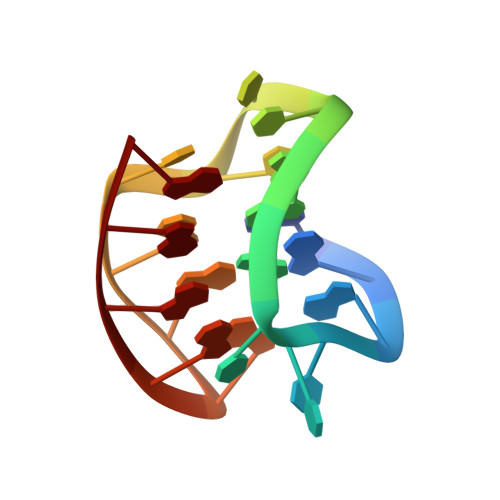Encoding canonical DNA quadruplex structure.
Dvorkin, S.A., Karsisiotis, A.I., Webba da Silva, M.(2018) Sci Adv 4: eaat3007-eaat3007
- PubMed: 30182059
- DOI: https://doi.org/10.1126/sciadv.aat3007
- Primary Citation of Related Structures:
2M6V, 2M6W, 5J05, 5J4P, 5J4W, 5J6U - PubMed Abstract:
The main challenge in DNA quadruplex design is to encode a three-dimensional structure into the primary sequence, despite its multiple, repetitive guanine segments. We identify and detail structural elements describing all 14 feasible canonical quadruplex scaffolds and demonstrate their use in control of design. This work outlines a new roadmap for implementation of targeted design of quadruplexes for material, biotechnological, and therapeutic applications.
Organizational Affiliation:
School of Pharmacy and Pharmaceutical Sciences, Biomedical Sciences Research Institute, Ulster University, Coleraine BT52 1SA, UK.














